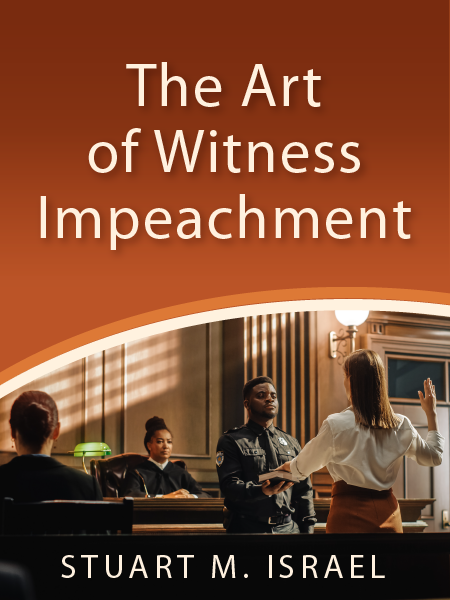I often have occasion to recount wisdom-laden legal anecdotes for the edification of newer lawyers. These lawyers listen with rapt attention, even while glancing at their phones. Ahead, preserved for posterity, is one of those anecdotes. It provides the invaluable lesson that there is a need to apply science and art when it comes to witness impeachment.
- Professor Thomas Mauet writes that “[i]mpeachment is the most dramatic trial technique in the lawyer’s arsenal. Selectively used and effectively employed, it can have a devastating effect at trial. Jurors appreciate effective impeachment. They enjoy seeing a witness get ‘caught’ changing his story.”1
Who doesn’t appreciate seeing someone else—to borrow from Shakespeare—“hoist with his own petard?”2 And “’tis most sweet” when that someone else is the other side’s self-important star witness.3
2. Effective impeachment undermines the credibility of testimony and the witness. Impeachment usually is employed during cross-examination, but Federal Rule of Evidence 607 instructs that “[a]ny party, including the party that called the witness, may attack the witness’s credibility.”
Impeachment may expose bias, prejudice, interest, or motive, or cast doubt on witness objectivity or reliability. Impeachment may reveal perception deficiencies or the witness’s pertinent criminal convictions or past bad acts “probative of the character for truthfulness or untruthfulness.”4
The “most frequently used impeachment method at trial,” Mauet writes, is presenting a witness’s “prior inconsistent statements.”5
To be effective, impeachment must be simple, clear, and material. Complicated or fuzzy impeachment is ineffective. Marginal impeachment is rarely effective and, worse, can backfire.
You don’t want to try to pass off a witness’s forgivable inconsistency or understandable memory lapse as a calculated transgression of the commandment against bearing false witness. Fact-finders have their own human foibles, and you do not want them to empathize with the adverse witness you are cross-examining. When planning impeachment, consider the Aristotelian golden mean: nothing too much.
So, witness contradictions warrant your attention only if they are material to your case. Marginal contradictions do not work because marginal mistakes are human. You learned this in high school from Walt Whitman.6
Next is an example of effective impeachment. It is followed by my eyewitness account of an impeachment that gets high marks for mechanics, but a zero in effectiveness.
4. Here is the effective impeachment.
The Practical Lawyer
CLICK HERE to read the full article, which was originally published in ALI CLE’s The Practical Lawyer.
Subscribe to the print or digital version of The Practical Lawyer today.


